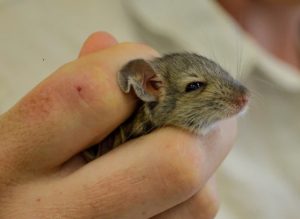Recent good rains have triggered a burst of plant growth from Yellabinna to Lake Torrens in the South Australian outback, and now the native fauna is showing signs of recovery as well.
The recovery is likely to be due, in part, to the success of calicivirus (RHDV) in reducing rabbit numbers.
When RHDV swept through the region in the mid-1990s it decimated local rabbit populations and also led to a reduction in the number of feral cats. High rabbit numbers are known to support higher numbers of feral cats.
After good rains it was reported that small native rodents and other mammals (including the dusky hopping-mouse, spinifex hopping-mouse, plains mouse and the crest-tailed mulgara) had expanded their range significantly. The drop in rabbit numbers due to calicivirus was attributed with being a root cause to the recovery of the native fauna.
In subsequent drier seasons those animals became less common again, retreating to spots with better conditions (‘refuge’ areas), which were still well outside their former range.
It looks like recent rains have enabled many species to rebound once again – and the reduction in rabbit numbers due to biological controls can be thanked for playing a big part in that.
For more information on the current rebound, see the ABC News article by Shari Hams, Emma Pedler, and Georgia Roberts.

Native mice. Image: ABC Khama Gilchrist
